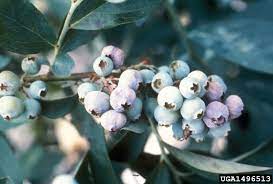By Clint Thompson
Looming warmer temperatures mean blueberry blooms will soon start opening up across the Southeast. That means growers need to be diligent in applying necessary fungicide sprays.

Jonathan Oliver, University of Georgia (UGA) assistant professor and small fruits pathologist, discussed the various diseases producers should be wary of during open bloom.
“At bloom we’re concerned about mummy berry disease. That’s a major disease of blueberry. Usually, multiple fungicide applications are necessary around bloom to control mummy berry. We’re also concerned about all of the fruit rots as well as botrytis blossom blight at that time. We have anthracnose fruit rot, Alternaria fruit rot, botrytis fruit rot as well as botrytis blossom blight; all of that occurs at that time,” Oliver said.
“Products that are active, hopefully, against more than one of those diseases should be applied. Multiple products in a tank mix should be applied at that time. It’s usually going to take two or three applications to cover that entire bloom period to protect those blooms. Those blooms develop into fruit, and fruit is what you need. It’s very important to protect the fruit at that stage to keep the fruit healthy as it grows. Later in the season when you harvest that fruit, it won’t have been infected by the fruit rots at that time.”
Oliver said bloom is the most intensive period of the production season for growers to control diseases. Growers should be actively protecting their crop against the plethora of diseases.
“That’s the period when growers really have to be on it and be out there pretty regularly. They’re usually running things every couple of weeks during the bloom period to deal with fruit rots and things,” Oliver said.









